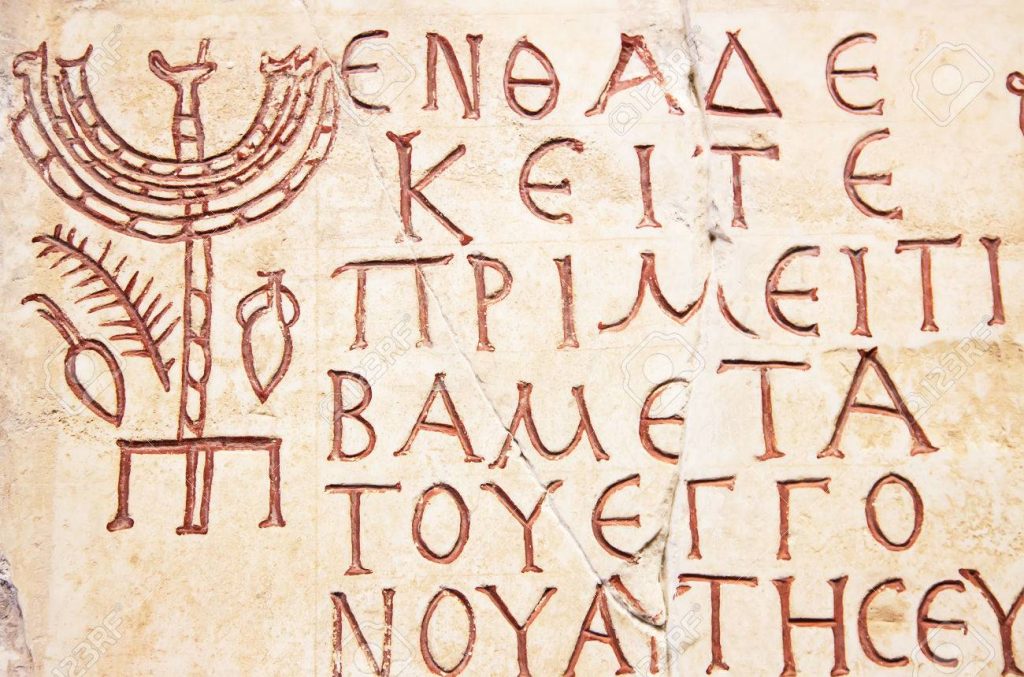Weekly Research
I am very interested in cultures and seeing how they interact and influence each other’s traditions. This week, as we learned about various forms of writing, I was especially intrigued by how pictorial writing was transformed into concise symbols. It is interesting how our way of communication could be so different throughout the world but have similar roots as well. For example, many diverse languages like Greek, Hebrew, Arabic, and English derived from the Phoenician alphabet as its base. It amazes me how unique each of these languages are, and yet that they could come from the same base.
Roman Theatre
Culture is a broad term that can be defined by what makes a group of people unique. This uniqueness can be self-discovered through time or adapted through interactions with other cultures. The Roman culture is a good example of how interacting with another group of people can affect the way a civilization interacts with each other, developments in technology and forms of entertainment. Especially through entertainment, whether this be art or in this case theatre, ideas can be freely bounced around and altered through time to fit the existing culture’s way of life.
The history of Roman Theatre began in 240 B.C.E., when former schoolteacher, Livius Andronicus, presented his first tragedy (an adaptation from a Greek play) in Rome (Erasmo 10). While Theatre had become a very popular pastime in Greece, it was a new cultural experience for the Romans and began their journey into expressing it for themselves. As a result, many Greek plays were translated due to popularity.
Although majority of Roman Theatre originated and was heavily inspired by Greek Theatre, the adapted versions of plays contain Roman cultural style and technical opinion.
Cultural Style
Many people are quick to associate Roman and Greek Theatre as numerous dramas have been translated from Greek to Latin for different audiences. However, according to writer, Mario Erasmo, “Roman tragedians adapted rather than translated their Greek originals… Roman writers, whether engaging a Greek or Latin model, always attempted to emulate rather than imitate their models” (Erasmo 2). As Erasmo points out, there were major similarities in the plays that were being written as they derived from Greek originals. However, there were specific cultural changes that occurred in order to captivate the Roman audience.
For example: The main change that happened was language, from Greek to Latin, as well as changes to scenic and dramatic context to portray Roman culture for the audience to comprehend what they were seeing.
Another example of adapted culture, is tragedian, Naevius’ contributions in the form of a new dramatic genre which was called fabula praetexta or historic drama. Erasmo writes, “Themes of his historical drama deal with remote legendary or quasi-historical subjects… or with the military success…” (Erasmo 15). Historic drama was unique in that it did not include any elements of Greek history. These plays glorified specific Roman heroes and became a form of storytelling to document historic events.
Therefore, Roman theatre contained its own cultural style set apart from the Greek originals. The Romans also completely branched away to the creation of their own genre and storytelling.
Technical Opinion
 There were a few major comparisons in technical opinion that could be observed between Greek and Roman theatre. Technical opinion in this case refers to format, the audience, and scenic changes that were both similar and different to that of the Greeks.
There were a few major comparisons in technical opinion that could be observed between Greek and Roman theatre. Technical opinion in this case refers to format, the audience, and scenic changes that were both similar and different to that of the Greeks.
One similarity involving the seating of the audience, as writer, Frank Sear points out, “Seats had been reserved in the names of individuals since Greek times” (Sear 3). Seats were often inscribed with an important donor or benefactor, very similar to how present-day recognition is approached. This portrays a sense of sophistication of both Roman and Greek culture.
A couple technicalities that affected both the scenery of the stage and the format of the play itself involved the music. Early in the creation of Roman theatre, Livius replaced the orchestra on stage with the chorus (Erasmo 2). This affected the overall feel of the play as he also subtracted a portion of their singing. As Erasmo describes, Livius assigned “cantica, or recitative arias, to an actor, rather than to the chorus, which meant that the chorus did not provide the musical interludes between act” (Erasmo 11). This was an astounding change brought to theatre.
This shows that Roman theatre was able to develop its own technical opinion and style that differed from its Greek counterpart.
Conclusion
As in many cultures, there were similarities between Greek and Roman theatre both in content and how they approached it visually. However, the Romans were able to break away from this and create their own style both culturally and technically.
–
Works Cited
Erasmo, Mario. Roman Tragedy : Theatre to Theatricality. Austin : University of Texas Press, 2004., 2004. EBSCOhost, ezproxy.capilanou.ca/login url=https://search.ebscohost.com/login.aspxdirect=true&db=cat02755a&AN=cul.b1180523&site=eds-live&scope=site.
Sear, Frank. Roman Theatres : An Architectural Study. Oxford ; New York : Oxford University Press, 2006., 2006. EBSCOhost, ezproxy.capilanou.ca/login? url=https://search.ebscohost.com/login.aspx?direct=true&db=cat02755a&AN=cul.b1070300&site=eds-live&scope=site.

